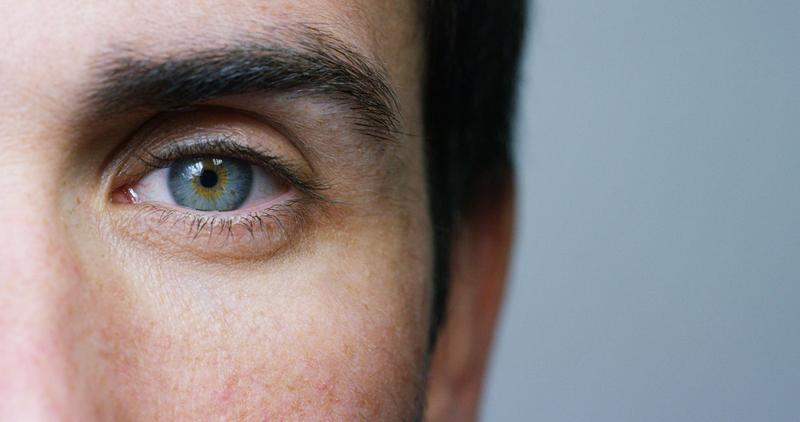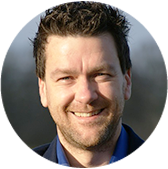Neurofeedback is the collection of brain function data through real-time observation of brain waves. (1) It is a protocol in which a client’s brainwaves are measured to provide feedback signals that are then interpreted and used in multiple ways. When the waves are changed into audio, visuals, or both, they can better understand and manipulate them. This protocol can modulate dysregulated brain functioning for therapeutic results. (2)
At NeuroZone, speech-language pathologist Erin Badour, CCC-SLP, and her expert staff treat clients with great care to create a specific neurofeedback protocol for each individual. To best influence the learning aspect of this protocol, we focus on creating a comfortable atmosphere where anyone is welcome and listened to. Whether you are looking for an alternative to medication, or want to learn more about how your brain works, schedule a free consultation with a member of our talented staff. Call us today at:
(310) 821-3640 – Santa Monica and Playa Del Rey, CA
(424) 247-8193 – Redondo Beach, CA
All About Neurofeedback and Brainwaves
Neurofeedback relies on brain mapping and analysis to treat many neurological conditions and disorders like insomnia, attention deficit disorder, and anxiety. (2) Used clinically to treat many different executive functioning disorders, neurofeedback is an exciting self-learning tool. It can influence real behavior change and cognitive influence. This treatment looks very different depending on the client and their circumstances.
Electroencephalography (EEG)
Neurofeedback relies heavily on the use of EEG, a tool that measures electrical brain activity. During this treatment, electrodes are carefully placed on a client’s scalp to record the activity of brainwaves in the cerebral cortex. This data is then translated into visual representations on a computer screen of the electrical activity recorded. During neurofeedback training, these frequency waves are assessed by the clinician while subjecting the client to a form of visual or auditory stimuli. Neurofeedback protocols can be utilized in different ways for each patient. Your NeuroZone clinician creates a specific treatment protocol for your needs to optimize your treatment.
How Does Neurofeedback Training Work?
During a neurofeedback session, the individual engages in activities that encourage desired brainwave patterns while receiving immediate feedback through visual or auditory cues. Over time, this reinforcement helps the brain learn to self-regulate, leading to lasting improvements in brain function.
Neurofeedback Training
At NeuroZone, we use a neurofeedback tool called qEEG brain mapping to measure activity in the brain. This allows us to diagnose certain conditions for clients and plan treatments like neurofeedback training. qEEG is quantitative, meaning it records with 19 or more simultaneous EEG sensors. A client’s map is compared to a database of “normal” maps to evaluate the intricacies of their brain activity. This assessment helps us determine the strengths and weaknesses of a client’s total brain activity.
Types of Brain Wave
Brain wave frequencies refer to the speed at which brain waves oscillate. Different frequencies correspond to various states of consciousness, ranging from deep sleep (delta waves) to heightened alertness (beta waves).
- Alpha Waves: Alpha waves are associated with relaxation and calmness. When we are in a state of wakeful relaxation, such as during meditation or light sleep, alpha waves dominate our brain activity.
- Beta Waves: Beta waves are linked to alertness and concentration. They are prevalent when we are actively engaged in mental tasks, problem-solving, or decision-making.
- Theta Waves: Theta waves are present during deep relaxation, dreaming, and the early stages of sleep. They are associated with creativity, intuition, and emotional processing.
- Delta Waves: Delta waves are the slowest brain waves and are prominent during deep, dreamless sleep. They play a vital role in restorative sleep, tissue healing, and overall rejuvenation.
- Gamma Waves: Gamma waves are the fastest brainwaves and are involved in cognitive functioning, memory recall, and information processing. They are associated with heightened focus and peak performance.
During neurofeedback protocols, electrodes are carefully placed around the scalp in specific areas. Their purpose is to pick up the brain activity near them and map it out clearly through the imaging process. Each electrode targets an area that has been scientifically proven to show certain types of activity. For instance, things like visual or traumatic memories are typically processed in the occipital lobes, which are located on the back of the head near the neck. This knowledge is essential when testing for specific cognitive and behavioral issues in clients. (2)
Benefits of Neurofeedback
Neurofeedback is a non-invasive tool used to analyze information that can only be found or observed in the brain. It has the potential to help clients relearn or address certain behaviors that may be greatly impacting their daily lives.
These protocols can be used to treat:
Neurofeedback is a safe and effective treatment option for many different types of clients. It introduces helpful coping skills that can be continued long after treatment is through.
Ideal Candidates

Neurofeedback is applicable to those struggling with anxiety, inattention, lack of focus, brain fog, stress, trouble sleeping, and many more neurological symptoms. It is intended for clients’ mental, emotional, or behavioral conditions that may not respond well to more traditional treatments. Good candidates for neurofeedback protocols are healthy children or adults who are willing and able to consistently attend appointments at NeuroZone for the best results. From clients who are dealing with trauma to those looking to improve their productivity, neurofeedback protocol is a versatile and repeatable treatment.
Personal Consultation at NeuroZone
We offer private consultations for all new clients. One of our clinicians will meet with you to discuss your medical condition and what you wish to achieve with the help of neurofeedback treatment. They will ask you about your lifestyle choices, potential symptoms or diagnosis, and why you are interested in trying this protocol. It can be challenging to tackle your mental and physical health head-on, but our experienced and compassionate clinicians will take the time to hear your concerns and treatment desires to create the protocol that works best for you.
Neurofeedback Preparation
Since this treatment is non-invasive, there is very little preparation to be done beforehand. To best prepare yourself, please arrive at your appointments with an open mind ready to focus on the treatment. It is helpful to avoid sudden changes in medication and/or diet before your appointments as this could potentially affect your brain function and results. This is especially important if you are currently taking any inhibitors like an SSRI or SNRI for depression and anxiety.
During your qEEG, you must be able to sit still and stay relaxed and focused throughout the brain mapping. We create a personalized protocol for your specific needs that includes certain types of mapping, a number of treatments, and brainwave frequency band requirements. You will be given this information during your private consultation with us.
Recovery & Results
You may feel a little tired after your neurofeedback protocol appointments, but this treatment requires little recovery time. As you learn new coping skills and brain training tools, it takes effort to implement them. This is where your healing begins and is an important step in the process. We assess your progress in between treatments to make sure you stay on track.
It often takes a while before clients notice the results of their hard work. Since you are retraining your own brain throughout your protocol, the therapy usually results in improvements later in your treatments. If you find yourself losing steam, we will reevaluate your protocol to find places to improve your timeline and results.
How Much Does Neurofeedback Cost in Greater Los Angeles?
Neurofeedback protocols are extremely varied depending on the patient. Your total cost is influenced by your number of treatments and medical circumstances. To find out exactly how much your personalized neurofeedback protocol might cost, schedule a free consultation at NeuroZone today. Call (310) 821-3640 (Playa Del Rey, Santa Monica) or (424) 247-8193 to reach our Redondo Beach office.
If you are curious about neurofeedback and its other applications, read NeuroZone’s blog for more information.
FAQ
How many sessions of neurofeedback does it take to see results?
Typical protocols require anywhere from 10 to 20 sessions to see the beginning results. For best treatment outcomes, 30 to 40 sessions are recommended and often necessary.
How often are neurofeedback treatments?
Depending on the client and their protocol, treatments can vary. They are usually twice a week every week until the treatment is through.
How long does a neurofeedback session typically take?
For most clients, neurofeedback sessions take around 40 minutes to 1 hour to complete.
References
- Rance M, Walsh C, Sukhodolsky DG, et al. Time course of clinical change following neurofeedback. NeuroImage. 2018;181:807-813. doi:https://doi.org/10.1016/j.neuroimage.2018.05.001
- Marzbani H, Marateb H, Mansourian M. Methodological Note: Neurofeedback: A Comprehensive Review on System Design, Methodology and Clinical Applications. Basic and Clinical Neuroscience Journal. 2016;7(2). doi:https://doi.org/10.15412/j.bcn.03070208
- Rayi A, Murr N. Electroencephalogram. PubMed. Published 2021. Accessed March 5, 2024. https://www.ncbi.nlm.nih.gov/books/NBK563295/





